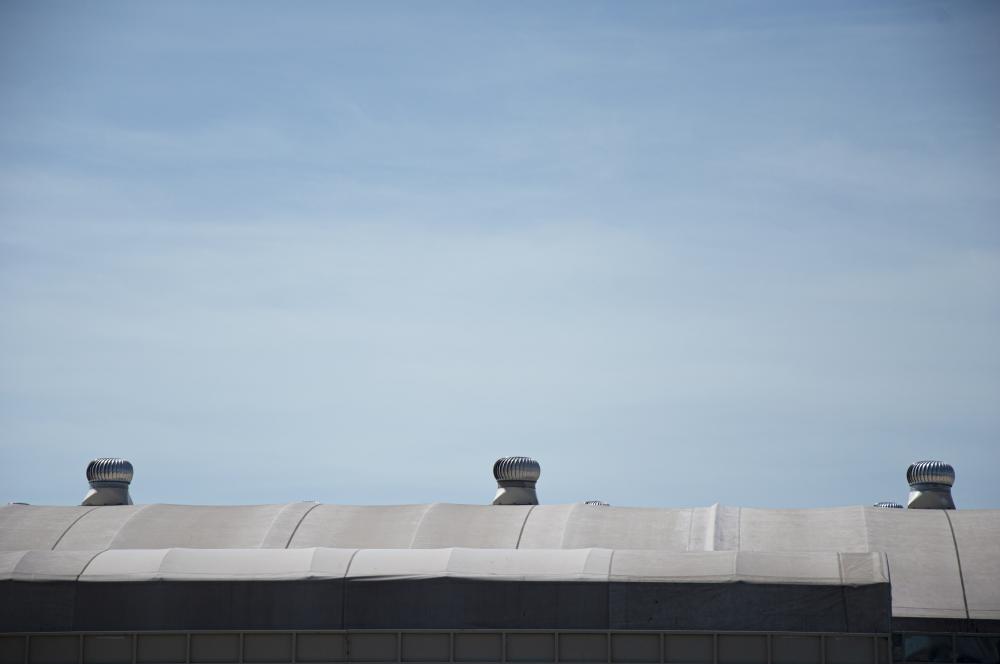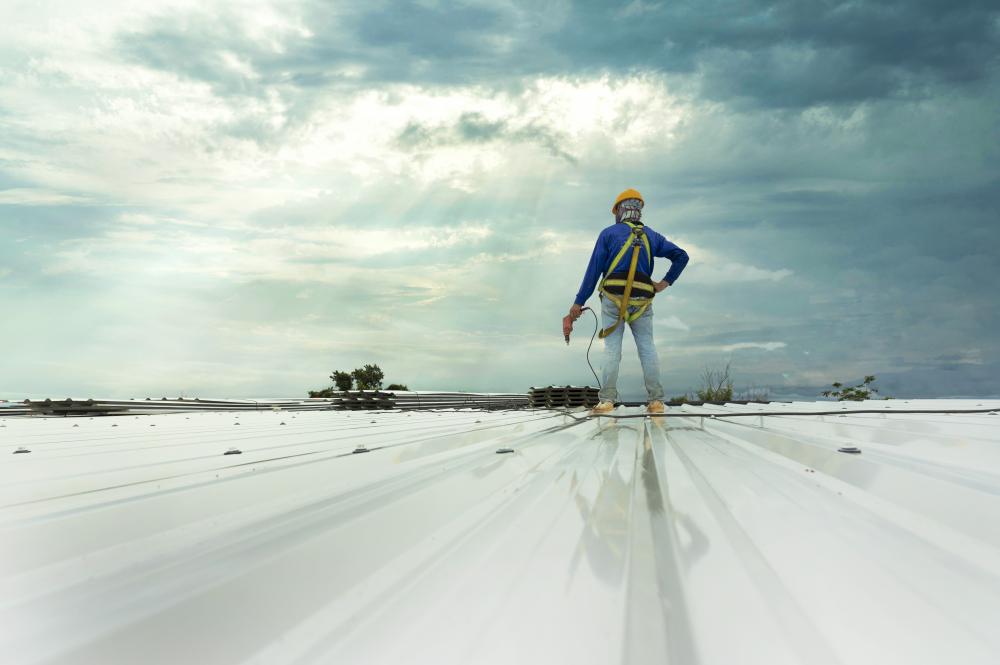
Understanding Commercial Flat Roof Replacement
When it comes to maintaining the structural integrity and functionality of your industrial facilities, the importance of a robust roofing system cannot be overstated. At MBR Industrial, we recognize that commercial flat roof replacement is a significant undertaking that calls for meticulous planning, expert execution, and a deep understanding of the materials and methods involved. Through our two decades of experience in serving the GTA, we’ve garnered unique insights into the complexities of commercial roofing solutions.
Choosing the Right Roofing Material
One of the first steps in any commercial flat roof replacement project involves selecting the appropriate roofing material. This decision is instrumental in determining the longevity, durability, and efficiency of your new roof. Our experiences have shown that each material offers its set of benefits tailored to different needs.
Thermoplastic Polyolefin (TPO)
TPO is favored for its reflective properties, contributing to energy efficiency. It’s a durable option that withstands chemical exposure and ultraviolet light.
EPDM Rubber
EPDM stands out for its resilience against weathering, thermal shock, and UV radiation. Its ease of installation and repair makes it a pragmatic choice for many businesses.
Modified Bitumen
This choice is well-suited for roofs that expect high foot traffic. Offering a blend of traditional and modern roofing technologies, modified bitumen is known for its strength and flexibility.
The Replacement Process
Embarking on a commercial flat roof replacement project is a journey that requires careful planning and precision. At MBR Industrial, we adhere to a structured approach to ensure that every step is executed with utmost diligence.
Initial Evaluation
We begin with a comprehensive assessment of the existing roof to identify any underlying issues that could affect the new installation. This evaluation helps in choosing the most suitable roofing system.
Preparation and Installation
Following the evaluation, we prepare the roof by removing the old system, repairing any structural damages, and ensuring the surface is ready for the new installation. The choice of installation method–be it fully adhered, mechanically attached, or ballasted–depends on the selected material and the specific needs of your building.
Maintenance and Care
A new roof is a significant investment, and regular maintenance is crucial to extending its lifespan and maximizing its performance. We provide tailored maintenance plans, including routine inspections and timely repairs, to keep your roof in optimal condition.
Why Choose MBR Industrial?
At MBR Industrial, we bring over 20 years of expertise to your commercial flat roof replacement project. Our commitment to excellence and customer satisfaction sets us apart in the GTA’s industrial sector.
We pride ourselves on our ability to deliver customized solutions that meet the unique needs of our clients. From selecting the right materials to providing ongoing maintenance, our team is dedicated to ensuring the success and longevity of your roofing project.
Our strategic location in the heart of the GTA allows us to respond promptly to our clients’ needs, ensuring minimal downtime and disruption to your operations. We’re not just a service provider; we’re your partner in maintaining and enhancing your industrial facilities.
Trusted Technician Expertise
Our team of skilled technicians is the backbone of our operations. Each member is rigorously trained and possesses a deep understanding of the latest roofing technologies and techniques. Their expertise ensures that every commercial flat roof replacement project is executed with precision, adhering to the highest standards of quality and safety.
Tailored Solutions for Every Client
We understand that each business has its unique challenges and requirements. That’s why we offer bespoke roofing solutions designed to address the specific needs of your industrial facility. Whether you’re looking to improve energy efficiency, enhance durability, or ensure maximum protection against the elements, MBR Industrial has the experience and resources to make it happen.
Concluding Thoughts
Commercial flat roof replacement is a critical aspect of industrial maintenance, demanding a thoughtful approach and specialized expertise. At MBR Industrial, we’re committed to providing top-quality roofing solutions that enhance the value and functionality of your facilities. With our comprehensive services, skilled team, and customer-centric approach, we’re your go-to partner for all your roofing needs in the Greater Toronto Area.
Embarking on a commercial flat roof replacement may seem daunting, but with the right partner, it can be a smooth and rewarding process. We invite you to experience the difference that professional dedication and expertise can make in your next roofing project.

How much does it cost to replace a flat top roof?
Great question! The cost of replacing a flat top roof can vary significantly depending on several factors such as the size of the roof, the chosen materials, and the labor involved. Typically, you’re looking at a range somewhere between $5 to $10 per square foot. However, for premium materials like Thermoplastic Polyolefin (TPO) or Ethylene Propylene Diene Monomer (EPDM) rubber, prices can be higher due to their longevity and durability benefits. It’s always a good idea to get a tailored quote that considers your specific needs and budget. Have you considered which roofing material might be suitable for your project?
What is the best material for a commercial flat roof?
When it comes down to it, the “best” material really depends on what you value most for your commercial flat roof. If energy efficiency is your top priority, TPO is widely regarded for its reflective properties which can help keep buildings cooler and reduce air conditioning costs. On the other hand, EPDM rubber is celebrated for its resilience against extreme weather, making it an excellent choice for areas prone to harsh conditions. Then, there’s Modified Bitumen, a great option if you anticipate a lot of foot traffic on the roof. Each material has its unique advantages, so it’s about matching those to your project’s specific needs. What are the main concerns you have for your roof?
What is the life expectancy of a commercial flat roof?
Life expectancy can be quite a hot topic in the world of commercial roofing! Generally speaking, with proper installation and maintenance, you can expect a commercial flat roof to last anywhere from 20 to 30 years. However, this can differ widely based on the material used. TPO and EPDM roofs, for instance, boast longer lifespans due to their durable nature, being able to last up to 30 years or more. Modified Bitumen roofs are also quite hardy. The key to reaching or even exceeding these life expectancy figures lies in regular maintenance and timely repairs. How often do you currently have your roof inspected?
How much does it cost to convert flat roof?
The cost of converting a flat roof to another type, such as adding a pitch, can be a complex process involving structural adjustments, which means costs can vary widely. You might be looking at anything from $15,000 to $20,000 or more, depending on the size of the roof, the complexity of the conversion, and the materials used. It’s a significant undertaking that requires expert advice and planning. Conversions can offer long-term benefits, such as improved drainage and potentially less maintenance. Have you thought about the long-term goals for your property?
What are some essential maintenance tips for keeping your flat roof in top condition?
Maintaining your flat roof is crucial for its longevity. Regular inspections at least twice a year, typically in spring and fall, can help identify potential issues before they become major problems. Keeping the roof clean of debris and ensuring that drainage systems are clear and functioning properly can prevent water accumulation and subsequent damage. Also, repairs should be carried out promptly to avoid further deterioration. Remember, a little bit of proactive maintenance can go a long way in extending your roof’s life. How often do you currently perform maintenance checks on your roof?
What are some common misconceptions about flat roofs that business owners should be aware of?
One of the biggest misconceptions is that flat roofs are more prone to leaking than pitched roofs. In reality, when properly installed and maintained, flat roofs are just as reliable. Another common myth is that flat roofs have a shorter lifespan. However, as mentioned earlier, with the right material choice and regular maintenance, flat roofs can last just as long as, if not longer than, their pitched counterparts. It’s all about understanding the needs of your specific roof and ensuring it’s well-cared for. Are there any concerns you’ve heard about flat roofs that you’d like us to address?
How do you know when it’s time to replace your commercial flat roof?
Knowing when to replace your flat roof is key to avoiding serious damage to your property. Signs to look out for include frequent leaks, extensive pooling of water, visible damage to the roof membrane, and significant wear and tear. If the roof’s age is approaching or has surpassed its expected lifespan, it might also be time for a replacement. Lastly, if repairs are becoming more frequent and costly, it could be more economical to replace the roof. It’s always best to consult with a professional who can assess the condition of your roof and provide expert advice. Do you have any specific concerns about the condition of your roof?
Roofing Resources
- Energy.gov – Roofing – Explore information on various roofing materials and their energy efficiency properties.
- EPA – Green Building – Roof Materials – Learn about environmentally friendly roofing materials and their benefits.
- National Renewable Energy Laboratory – Roofing Technology – Access a detailed report on roofing technologies and their impact on energy efficiency.
- OSHA – Roofing eTool – Understand safety guidelines and best practices for roofing projects to ensure a secure work environment.

